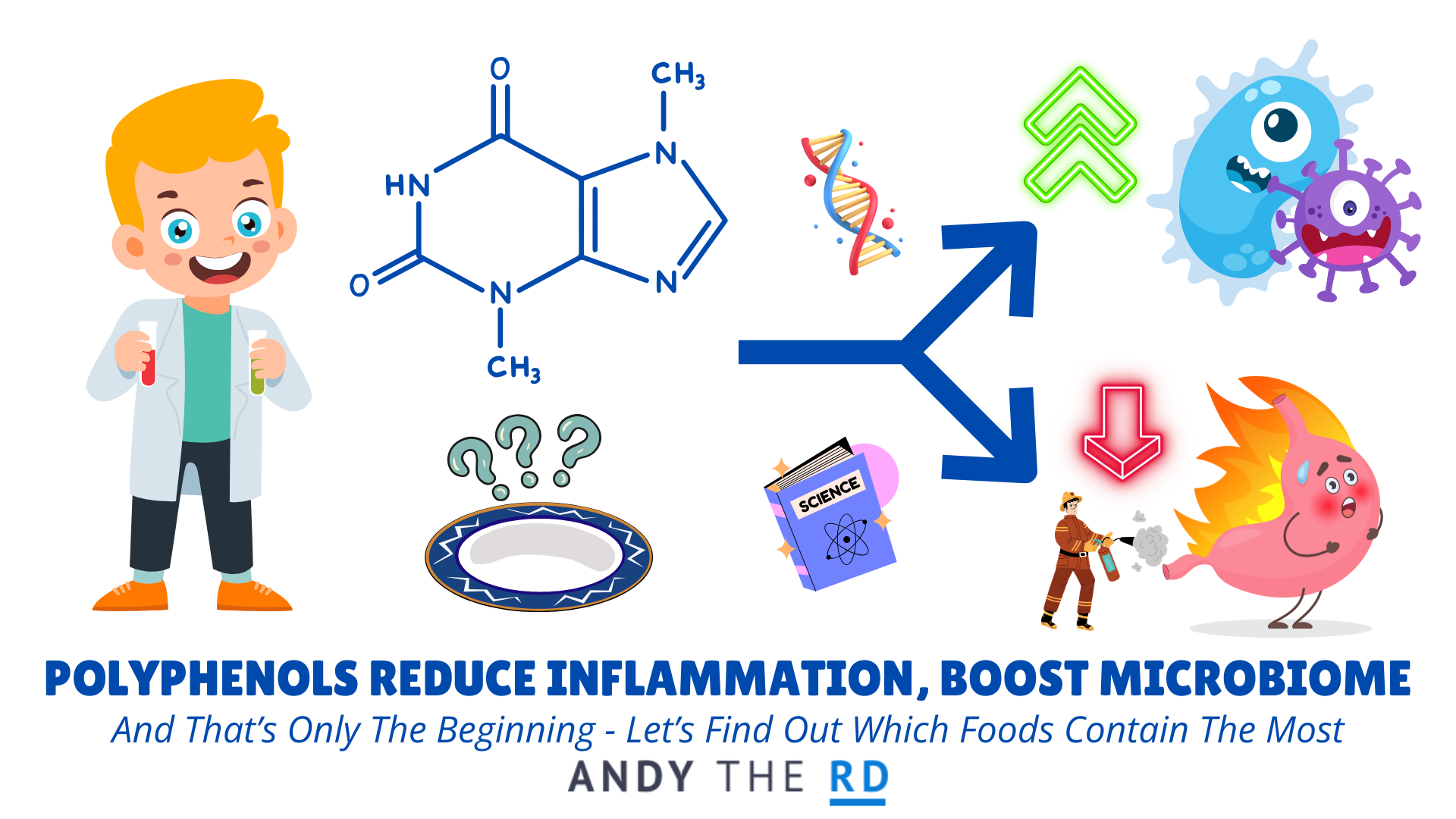Polyphenols are a family of plant compounds bound together both by their unique chemical structures and their tangible influence on human health.
I’ve previously written a piece discussing the role of polyphenol-rich foods for the prevention and reversal of fatty liver disease, and I encourage anyone interested in the role of these compounds in improving metabolic health to give it a read.
Today’s post will offer a concise look at the role of polyphenols in gastrointestinal health and the gut microbiome.
Let’s get to the good stuff.
Polyphenol Party
Your gut bacteria are invited.
Probably.
Scientists have long been curious about the role that dietary polyphenols play in positively influencing the human gut microbiome.
Although it is not easy to make high level claims in this area, there is growing evidence to suggest that polyphenols have a “prebiotic” influence on the gut microbiome – which is to say they bolster the numbers of health-promoting bacterial species.
A notable human study, known as The MaPLE trial, found that a high polyphenol diet increased the number of butyrate-producing bacteria in older adults.
Butyrate is a short-chain fatty acid (SCFA) with numerous metabolic health benefits that I’ve explored in a previous piece.
There’s more to the story though, and it involves an inflammatory marker known as calprotectin.
The Calprotectin Connection
Calprotectin is a protein associated with intestinal and systemic inflammation and is often used as a biomarker of severity for inflammatory bowel disease’s like Crohn’s and colitis.
Calprotectin levels also tend to rise with age.
In the MaPLE trial referenced above, a polyphenol-rich diet measurably reduced calprotectin levels in an older adult population with less than optimal gut health.
Even in healthy adults, however, dietary polyphenol consumption has been observationally associated with lower calprotectin levels.
But that’s not all.
A recently published study out of Scientific Reports found that older adults with higher calprotectin levels tended to have gut microbiome imbalances (dysbiosis) as indicated by higher levels of inflammatory bacterial species and lower levels of short-chain fatty acid producing species.
Taken together, the goal of today’s article is to further compel you to pursue more polyphenol-rich foods in your diet.
Let’s figure out how to do that.
Pump Up Your Polyphenols
If you’d like an exhaustive list of polyphenol-rich foods, please do check out my post on the topic.
For efficiency purposes, I’ve listed the foods below which will boost the polyphenol content of your diet the most.
These include:
- Cocoa Powder/Dark Chocolate
- Ground Flax
- Capers
- Blueberries
- Plums
- Pecans
- Hazelnuts
- Olives
- Artichoke
- Herbs & Spices
- Other Berries & Cherries
Simply put, these foods must not be ignored by anyone concerned with optimizing their metabolic and microbiome health.
Which, by the way, should be just about EVERYONE.

I hope you enjoyed today’s content, which I did indeed keep to 500 words.
If you are looking for more learning in this realm, the article below has your name (and mine) all over it.
Five Scientific Ways To Boost Your Microbiome – Andy The RD
Enjoy!
Andy De Santis RD MPH





